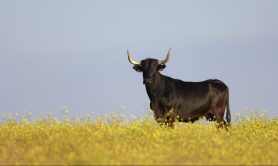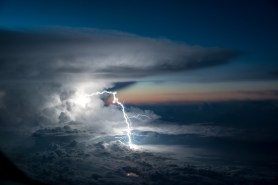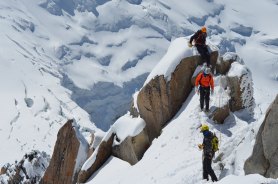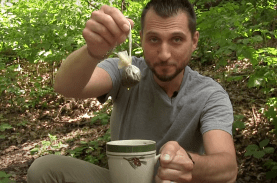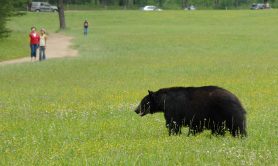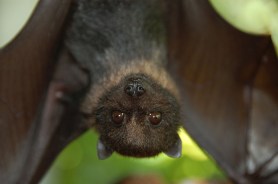

Wings open, her eyes scan the frozen foothills. She’s capable of spotting prey 11 miles in the distance and has located her target. Before the hearts of the watchers on the ground have a chance to beat, her stillness becomes a dive, hurtling downward. To the watchers, she is but a blurry speck glinting golden in the light of the sun. The wind buffets against her streamlined body, her wings tucked in tightly against her. A collective holding of breath releases as her talons extend and powerful wings open, stalling her flight. Her master bolts towards her on his powerful pony calling her to his arm She alights, prey in hooked beak.
Videos by Outdoors with Bear Grylls
The Kazakh peoples who populate Kazakhstan and the western reaches of Mongolia are keepers of the tradition of hunting with Golden eagles, which stretches back thousands of years. A nomadic people who live in gers – portable, weather-proof round tents lined with thick layers of felt and covered in canvas– the Kazakhs follow the seasons, moving with herds of goat and sheep and often a Gobi camel or two as well as their hunting partners: the Siberian Golden Eagles.
A subspecies of the American Golden eagle, these birds of prey are taken from their nest when they are old enough to feed themselves, but not yet old enough to fly. It is the female chicks which are taken, as they tend to grow larger and more intelligent than the males. They make fearsome hunters; when fully grown a female Golden Eagle is capable of taking down an adult wolf at full stride. The Kazakh ‘master’ trains the chick, hunting with them and fostering a bond between them. However, the wild never leaves these beautiful, powerful birds; when they reach prime breeding age, between seven to ten years old, they are released back into the wild to mate and raise their own chicks.

Hunting with the eagles traditionally occurs during the winter months. While nothing hunted will be wasted, the priority is fur, and this season is when the fox, hare, wild cats and wolves have their thickest coats on. The Kazakh people still dress mostly in traditional clothing. And like those of us that spend large periods of time outdoors in the cold, they know that the best fibers for protection from the elements are natural ones. Their thick fur coats are beautiful and their deels (a robe-like garment which cinches at the waist with a belt or cord worn under the thick fur coats) are also lined with fur in the winter. The landscape here in the foothills of the Altai Mountains is rugged, vast and sweeping, soaring glaciated peaks which dominate the skyline, with a wind is constant – moving from relentless whisper caressing the cheek and tangling the hair to an overwhelming roar.
There is an underlying vibe to this country which I haven’t felt in a long time. I feel relaxed, connected to myself. And I wonder if it is the naturalness of the way the nomads live – their lives revolving around the seasons, around their animals. It feels right. It is rare to meet peoples who still live so closely to how their ancestors have lived for thousands of years. When the temperatures plummet and the snow falls, many still do not move into towns and villages but remain steadfast in their gers, tending to their animals and living off the curds and dried meat they preserved throughout the summer months. In all the gers I visited throughout my two months in Mongolia, the women were a constant – stoking the stoves with yak dung, paddling butter in the large skin bags, making yogurt and curds. No matter how busy they were though, they were always so very welcoming, laying out feasts of hard breads, butter and salted yak milk tea for the visitors passing by.
Mongolia has my heart and I will be running two expeditions back-to-back this year. The first excursion begins with a horse riding journey. Here, we start by watching local nomad games, and living with the Eagle hunters, and then the group will traverse through the Mongolian steppes and foothills. On the second, we will track snow leopards in the Altai mountains, which is where the second largest population of the elusive big cat can be found.
If you’re interested in joining Megan Hine on a trip to Mongolia, spaces are available though limited. Visit meganhine.com to reserve your place.




